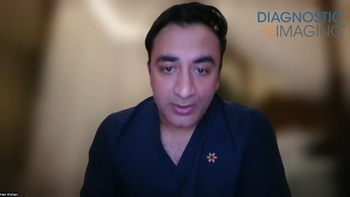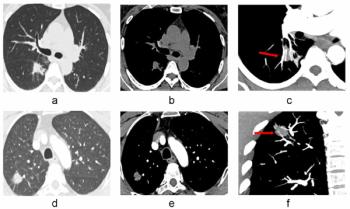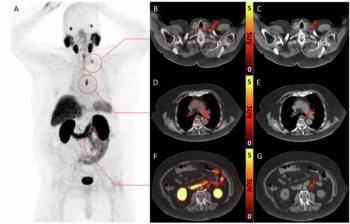
German panel slams low-field MRI with ruling on homogeneity volume
Decision bars reimbursement for low-field scans in private clinicsA German regulatory body dealt a major setback to the MRI industrylast week when it set stringent criteria that effectively banfederal insurance reimbursement in the country for
Decision bars reimbursement for low-field scans in private clinics
A German regulatory body dealt a major setback to the MRI industrylast week when it set stringent criteria that effectively banfederal insurance reimbursement in the country for scans conductedin private clinics on low-field MRI systems. The decision mayforce some German radiologists to replace low-field scanners thatdo not meet the criteria.
The ruling was issued Aug. 9 by the Kassenarztliche BundesVereinigung (KBV), the regulatory body that sets standards forGermany's federal insurance system. The ruling concerns how theKBV should interpret an arcane technical standard governing themagnetic homogeneity volume of low-field MRI scanners.
Germany's homogeneity standard is not new and has long beena sticking point for MRI vendors marketing low-field systems inthe country. It states that in order to be reimbursed throughthe federal insurance system, MRI scanners must have a homogeneityvolume of + or - 5 parts per million (ppm) over a volume of 40cm. Most low-field scanners are manufactured with a homogeneityvolume of + or - 5 ppm over a volume of 36 cm. Many scanners,such as the Siemens Magnetom Open magnet, have had difficultieswith the standard and some vendors have been lobbying for an exemptionto the rule.
The KBV ruling last week changes the way the standard is interpreted,raising even higher the bar that vendors must hurdle, accordingto Michael Friebe, president of Neuromed, an MRI service and developmentfirm in Castrop-Rauxel, Germany.
According to Friebe, the KBV's ruling states that the 5-ppmspecification of the homogeneity volume must be measured frompeak to peak, rather than using a full-width half-maximum technique,as many vendors have done in the past.
"In the past you had to maintain + or - 5-ppm homogeneityover 40 cm. That was really it. No one specified the measurementtechnique," Friebe said. "(Using) peak-to-peak (measurement),probably most of the 0.5-tesla units available right now do notfulfill this specification."
The ruling could shut the door on low-field MRI purchasingin Germany, or even force some radiologists to deinstall theirmagnets. Hitachi could be hit particularly hard, due to that company'shigh installed base of low-field systems in private clinics inthe country. The ruling does not affect reimbursement for scansconducted in public hospitals.
Radiologists in private clinics could opt out of the federalinsurance system and choose to see only patients covered by privateinsurance, which is not affected by the ruling. However, some90% of Germans are covered under the federal system, Friebe said.There is little chance that the decision, which takes effect Dec.31, can be overturned on appeal, he added.
Ironically, if the ruling stands it could be a boon for manufacturersof high-field systems, who could swoop in and fill the void leftby their low-field brethren. No one has a firm idea of how manyscanners will be replaced. Friebe estimated that up to 140 scannerscould be affected, although representatives from several MRI vendorsdon't believe that many scanners will be removed from service.
The KBV's ruling was not a surprise to Siemens of Erlangen,Germany. Private-clinic radiologists who purchase the vendor'sOpen 0.2-tesla magnet have been unable to get reimbursement sinceSiemens began marketing the system, according to Hermann Requardt,general manager of the company's MR division.
"This ruling was not unexpected, and we have anticipatedit for more than two years," Requardt said. "We believethat Open has features that make it attractive even if reimbursementis not available, such as its suitability for claustrophobic patients."
The KBV may have a difficult time enforcing the rule, accordingto Thomas Ludyga, manager of Hitachi's European subsidiary inDüsseldorf.
"A manufacturer could issue a statement that its machineconforms to the specifications, and it will be very difficultto challenge such a statement," Ludyga said. "Will itbe possible to inspect and measure every MR system in Germany?" Despite the ruling, vendors say they will continue with multicenterclinical studies under way on Open and Esaote Artoscan systemsdesigned to prove the utility of low-field MRI. The results fromthese studies will probably be used as part of an appeal to theKBV next year to gain an exemption from the homogeneity standard.
"Our mid-term strategy is to get away from machine specificationsand concentrate more on image-quality standards," Requardtsaid. "We want radiology to rely on image quality, becausespecifications do not guarantee that the machine is being usedadequately."
Newsletter
Stay at the forefront of radiology with the Diagnostic Imaging newsletter, delivering the latest news, clinical insights, and imaging advancements for today’s radiologists.






























